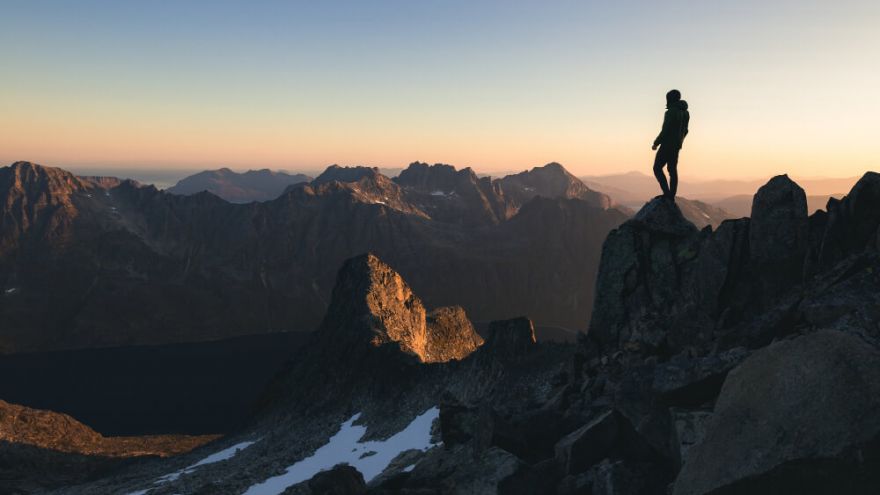Mountaineering Vs. Hiking: These Are The Key Differences!
 Mountaineering Vs. Hiking: These Are The Key Differences!
gearweare.net
Mountaineering Vs. Hiking: These Are The Key Differences!
gearweare.net
So, you’ve decided to spend more time outdoors, step up your hiking game, and try something new. Perhaps mountaineering is the next step for you.
It’s an intense sport that requires planning, skill, and determination.
When discussing mountaineering vs. hiking, there are a surprising amount of differences.
Continue reading to learn about the similarities, differences, and best for you.
Table of Contents
- What Exactly Is Mountaineering?
- What Exactly Is Hiking?
- Is Hiking Considered Mountaineering?
- What Are The Different Types Of Mountaineering?
- What Other Sports Are Included In Mountaineering?
- Is Mountaineering The Same As Mountain Climbing?
- What Are The Advantages And Disadvantages Of Mountaineering?
- Conclusion
What Exactly Is Mountaineering?
The main goal of mountaineering, or alpining, is to reach the summit of a mountain. Because these summits are often very high, you will need to do some trekking through snow, glaciers, and ice to get there. It’s an incredibly challenging sport that engages your entire body and requires specific gear such as ice axes, carabiners, mountaineering boots, sleeping bags, snow shoes, trekking poles.
A mountaineering trip is never less than one day. Depending on which peak you’ll be exploring, it could be anywhere between five days and two months… or longer. Special equipment, technical skills, and training are needed for this sport.
What Exactly Is Hiking?
Hiking is a less intense exercise with a lot of variation. A hike can be done on flat ground in one hour. A long walk can be considered a hike, especially if it is done in the woods or mountains. There are thousands of trails and terrains to choose from, all with varying difficulties.
Basic knowledge of using a compass or reading a map is preferable for hiking. However, besides a good pair of shoes and a bottle of water, you don’t need any special gear.
Is Hiking Considered Mountaineering?
While you will definitely do some hiking on your mountaineering trip, I wouldn’t consider them the same sport.
You always hike when you mountaineer, but you don’t mountaineer when you do hiking trails.
What Are the Different Types of Mountaineering?
Earlier, I mentioned that mountaineering is often referred to as alpining. To be more specific about the hike, many people say ‘expedition mountaineering’ or ‘alpining.’ What’s the difference?
Alpining occurs on medium-sized mountains, is a faster trip, and requires less gear (because the mountain peak isn’t as high).
Expedition mountaineering is long distance, takes you to higher peaks, and requires more gear.
As you can see, mountaineering vs. hiking expeditions are very different.
What Other Sports Are Included in Mountaineering?
If you haven’t noticed, this is an intense sport! There are many sub-outdoor activities that you engage in while mountaineering.
Here are a few.
1. Trail Climbing
There’s no way to start any mountaineering or alpining journey without trail climbing, aka hiking. If you’re lucky, you’ll have a few breaks of flat land before you begin the ascent to the summit.
2. Rock Climbing
Manmade trails can’t lead us everywhere. There are often parts of the mountain that are too steep to walk up or covered in boulders. When mountaineering, you’ll also need to engage in a bit of rock climbing.
Depending on the steepness, you may need a rope, harness, belay, helmet, etc.
3. Snow and Ice Climbing
The most technical part of the journey is the trek through the snow and ice. This section requires specific gear, practice, and extreme caution.
There will be some moments when you are simply hiking in the snow and others when you’re in a harness, hanging off a rock face with an ice pick.
Is Mountaineering the Same as Mountain Climbing?
These two sports are similar – much more similar than comparing mountaineering vs. hiking. However, mountain climbing is a general term. The trail is slightly technical when reaching a summit by mountain climbing; the trail is slightly technical – you’ll likely be hiking, scrambling, and perhaps a touch of mountaineering.
People generally use the term ‘mountaineering’ when traveling to the most difficult summits, such as Mount Everest, Cerro Torre, or Denali.
As I mentioned, mountaineering requires knowledge, planning, skills, and special equipment.
What Are the Advantages and Disadvantages of Mountaineering?
Let’s start with the advantages.
- A stronger body – you engage many different muscles when mountaineering
- Mountaineering is a great cardiovascular exercise
- Increased stamina and endurance
- Great for mental health. Exercise increases endorphins and helps you de-stress
- Views and experiences that many people don’t get to experience
And now, the disadvantages.
- At such a high altitude, one could experience altitude sickness
- Special training involved. You must be in good shape, research routes, know basic survival skills, etc.
- An expensive initial investment. (ropes, harnesses, crampons, ice picks, shoes, etc.)
- High risk of injury and/or hypothermia
- It cannot be done in a short amount of time
Conclusion
Now that you have clearly seen the differences between mountaineering vs. hiking, you’ll never mix up the sports again.
Mountaineering is a long, intense journey to some of the most difficult-to-reach peaks in the world. It involves training, specific gear, and physical fitness.
A hiking tour can be as easy as walking in the trees behind your home or a 10-hour uphill journey to your favorite lookout point.
Either way, they’re both great sports.
What’s your next move? A simple hike or the beginning of intense training sessions to tackle Mount Kilimanjaro or the Alps?











